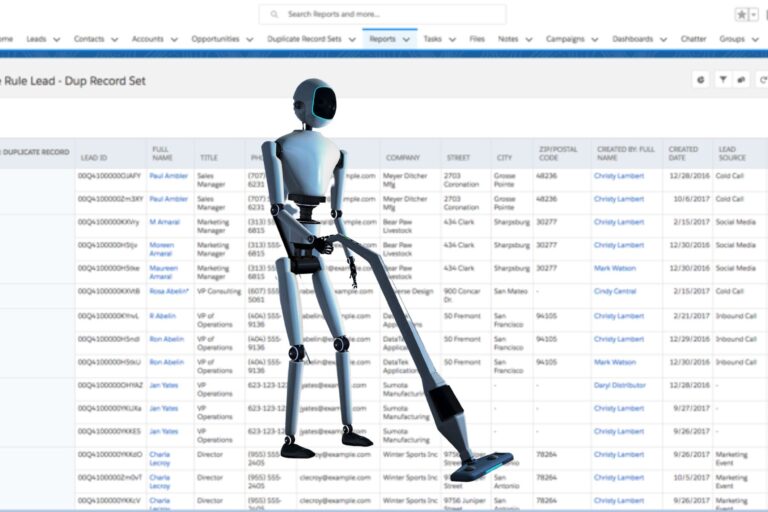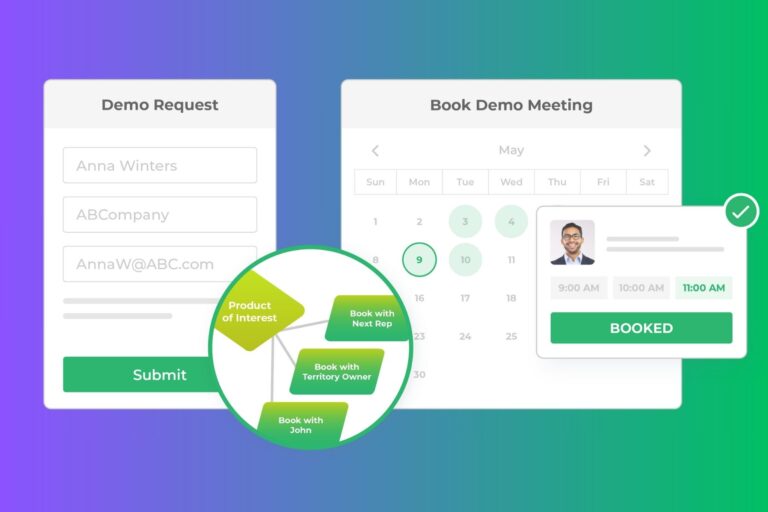With apologies to William Shakespeare, when it comes to marketing content collateral, “To gate or not to gate, that is the question.”
Gated content versus ungated content has been a topic of conversation since the advent of digital marketing. We talk about it at LeanData all the time.
As buying journeys have changed rather dramatically since the onset of the pandemic, a conversation around gated versus ungated content bears revisiting. Buyers, particularly B2B buyers, have changed their buying journeys. It’s now time for marketers to revisit every step of how they go to market and ensure it’s compatible with those new buying behaviors.
What is gated content?
Gated content is any content that requires visitors to “pay” for the material. Most often, the currency for payment is information – for example, a visitor’s name and email address.
Ideally, a visitor is convinced the gated content will be valuable, saving her time and/or money, or helping her overcome a challenge more effectively. If so, the price to pay is fairly minimal for the consumer. In turn, the organization collects a valuable name and email address, producing a lead for it to nurture and hopefully, over time, convert into a customer.
Gated content can be outstanding for your go-to-market efforts. Visitors who fill out forms are self-qualified hand raisers for your product, solution and/or service. There’s a lot of good there!
Ungated content, on the other hand, is “free” content, where a site visitor can consume the content without providing any information. The most highly visible forms of ungated content are blog posts and YouTube videos.
Why ungate marketing content?
Marketers get pressure from sales teams to produce leads. That’s always been the case, and it’s very unlikely to ever change. As a result, some marketers might ask, “Why not gate all my marketing content?”
Well, here’s the thing: People don’t like sharing their information.
WordStream reports the average landing page conversion rate is 2.35 percent across all industries. That means over 97 percent of visitors leave without filling out a form and, therefore, never seeing your valuable content.
Okay, so you might be thinking, “Yeah, but we’re so much better than average.”
Fair point. Perhaps.
However, it’s worthwhile considering the top 25 percent of landing pages convert at just 5.31 percent and above. The top 10 percent convert at about 11.5 percent.
So, no matter how effective you think your team might be, darn near near 90 percent of the traffic you send to your gated landing page leaves without ever converting. And, remember, that’s for the very best of the best.
Those self-qualified leads you receive at gates come at a hefty cost. Consider the high-quality leads who remove themselves from consideration by not filling out the form on the landing page.
It takes you a lot of time, energy and money to catch a viewer’s eye and get her to visit your page. Is capturing just one out of 10 good enough?
Should I use gated content or ungated content?
Most marketers deploy a blended content strategy. They offer ungated content like blog posts and informational briefs about products, solutions, etc. Then, they offer more premium, higher valued content, like eBooks and recorded webinars, behind a gate. There is, after all, that recurring need to cultivate leads for sales teams.
Then, again, there’s also that tradition-laden resistance to change.
But, a curious trend is emerging in light of new, B2B buying journeys. More and more Marketing departments are experimenting with the once unimaginable, and that is offering all content ungated.
There are a lot of advantages to ungating all content that just might outweigh the value of collecting self-qualified leads through form fill gates.
Advantages to ungated content
B2B buyers are now self-sufficient in the awareness and education phases of their buying journeys. In fact, studies shared at last year’s Dreamforce conference showed the majority of B2B buyers are deep into their consideration phases before they engage with a company representative.
Thus, freely accessible content has the greatest potential reach to deliver more individual impressions. Free content is easily shared across a variety of platforms, social media included. It also invites those treasured inbound backlinks from content produced by others.
Open and freely accessible content delivers huge SEO benefits. Your gated content is probably your highest quality content. Those eBooks, white papers and case studies are routinely stuffed with your most valuable keywords. It’s the type of quality content search engines crave, and you’ll likely be rewarded with high placements on search result pages.

How do I decide what content to gate?
Before you go willy-nilly into ungating all your content assets, let me introduce to you a simple approach to work through to guide your decision making.
First, understand where you are as a business, and how it might differ greatly in different regions and market segments.
- If you’re attempting to build brand awareness and establish a brand identity, most, if not all, of your content should be ungated.
- If you have great brand awareness and the large website traffic that typically corresponds with it, experiment with high-value ways of converting site visitors to leads. One way to collect names for your nurturing engines is to produce live online events, like webinars and conferences. Consumers already expect to register for those events in order to receive access links, materials and the like.
Secondly, produce only high-quality content – content that is informative and likely to be highly valued by the audience you want to attract – and publish at a high cadence.
- In creating content, including your website, design it around your target market’s buying journey, and include clear calls-to-action throughout.
- Within your content, offer links to other branded digital resources, including related eBooks, survey research, blog posts and the like.
- Almost always include links to a Contact Us or Request Demo form in case your viewer wants to speak to someone immediately.
Test, measure, learn, improve and repeat
Maybe most important in your Marketing Ops dilemma, don’t be afraid to experiment. Digital marketing lends itself to experimentation and A:B testing. So, test, learn, continuously improve and repeat. There’s no single one-size-fits-all solution for every organization, so do your best to learn what’s best for yours.
When it comes to gating or not gating, what’s worked best for you in your marketing efforts? What “non-traditional” approaches are you undertaking or considering? Let us know by hitting us up with a tweet @LeanData.












